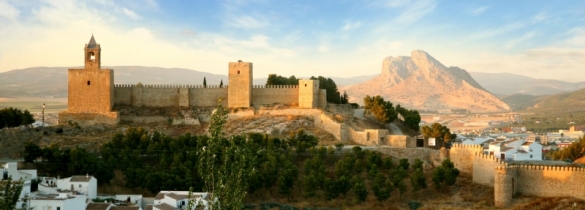
Andalucian sites added to the new UNESCO World Heritage List 2016.
El Torcal national park along with the Peña de los Enamorados (Lovers Rock) and the Megalithic dolmens of Menga, Viera and El Romeral, near Antequera, have been added to this year´s UNESCO´s World Heritage List, just announced on 15 July. The five sites - three cultural and two natural - are described by UNESCO as:
“The Antequera dolmens are outstanding examples of megalithic architecture and are amongst the most recognized and quoted in the world. They are also connected to two first-class landmarks: La Peña de los Enamorados and the mountains of El Torcal, Antequera. They are two mountain formations of outstanding geomorphological make-up which were the focal point for positioning the megalithic monuments; Menga is positioned towards the Peña de los Enamorados, whilst the Tholos de El Romeral is positioned towards El Torcal.”
Photo: Karst scanery of El Torcal near Antequera in Andalucia.
El Torcal National Park
Known for its dramatic limestone ‘stacks’ and fantasy film-set scenery , El Torcal is one of the most impressive karst landscapes in Europe. Designated a Parque Natural (Nature Reserve) in 1989, El Torcal's 17 square km are also home to the Spanish Ibex, foxes, Griffon vultures and several species of Eagle; along with 30 species of orchid, Maple, Mediterranean Holm Oak and Hawthorn trees.
El Torcal nature park is located close to the historic town of Antequera north of Malaga. For those who like hiking, there are three different marked trails (from 1-3 hours) with stunning views and impressive ammonites too; plus there´s a visitor centre and café/restaurant with a nice terrace. See El Torcal photos here.
El Torcal, along with other Andalucian destinations - from Guadix & Cabo de Gata to Seville´s Alcazar palace - was recently used as a key filming location for the new NBC fantasy drama series, Emerald City, based on L. Frank Baum´s The Wonderful Wizard of Oz.
Photo: NBC´s new fantasy-drama series, Emerald City, was filmed in Andalucia (DiarioSur).
The Dolmens of Antequera
Located on the outskirts of Antequera, the three dolmens of Menga, Viera and El Romeral represent some of the largest and most complete megalithic structures in Europe.
Built between 4000BC and 2000BC, by farmers of the fertile Guadalhorce valley, as enormous burial chambers and sites of great mystical importance for many cultures – from Neolithic burial and temple, to Iberian Roman necropolis and medieval Moorish sanctuary. Considering they are at least 5000 years old, they are in remarkably good condition, with the original stone structures and tumulus (long barrow earth mound) well preserved.
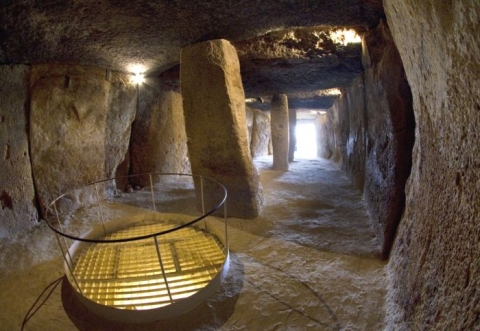
Photo: megalithic dolmens near Antequera in Andalucia.
Owing to the strategic location (then and now) of Antequera being at the crossroads of geographic and cultural routes – between Africa and Europe, Atlantic and Mediterranean - the construction of these dolmens show techniques typical of both types of megalithic cultures – lintelled construction (Atlantic) and false vaults (Mediterranean). Recent archaeological evidence also suggests that Antequera subsequently had cultural and economic ties with the Phoenicians, Greeks and Celts, and in Roman times ‘Antikaria’ was an important commercial centre for the export of the region´s quality olive oil.
However, for UNESCO, what really makes this site unique is that the Menga and El Romeral dolmens have anomalous positioning – orientated not just towards the sun (like virtually all other dolmens) but also aligned with natural landmarks. Menga faces towards the Peña de los Enamorados (Lovers’ Rock) mountain, while El Romeral is orientated towards the Comorrorro de las Siete Mesas peak in the El Torcal mountain range.
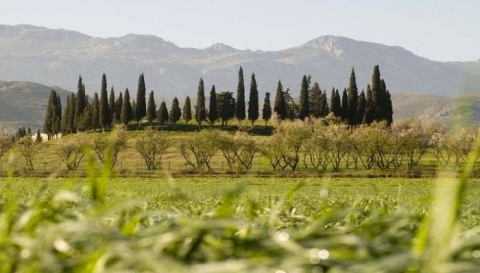
Photo: El Romeral dolmen, near Antequera in Andalucia.
It is this close relationship, both physically and conceptually, between the elements of cultural heritage and their natural setting which is so striking. As UNESCO says: “It is a culture in which the natural landmarks acquire the value of monuments whilst constructed monuments appear to be part of the natural landscape”.
The Menga dolmen
The Menga Dolmen is considered to be the largest megalithic chamber in Europe, measuring nearly 30m long and up to 6 metres wide and 3.5 metres high. The biggest of the 12 huge upright stones weigh 180 tons – over 4 times heavier than Stonehenge (UK) – while the gigantic capstones on the roof weigh over 250 tons, all set within a 50 metre-diameter tumulus.
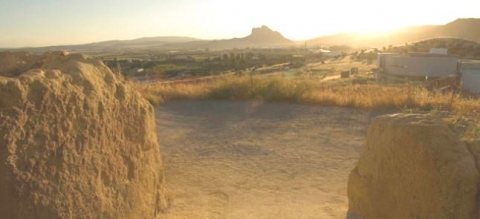
Photo: view of La Pena de los Enamorados from the Menga dolmen (La Opinion Malaga).
The dolmens here are so large that the lintels had to be reinforced with interior pillars, a unique architectural solution then according to UNESCO. From the 19th century onwards, Menga was used as a key reference point in the creation of the concept of megalithic archaeology - along with Stonehenge, Averbury, Newgrange and Carnac – and described as “the most beautiful and perfect of all known dolmens”.
In addition to Menga´s precise alignment, framing the Peña de los Enamorados, the orientation of the entrance passage is at 045 degrees north-east, towards the sunrise of the summer solstice (see above).
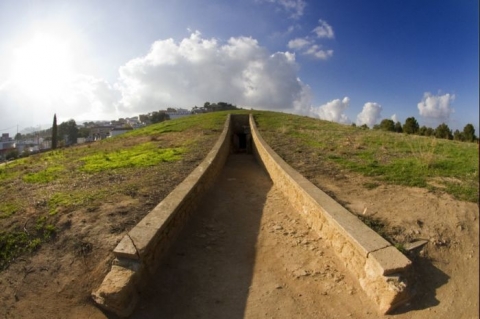
Photo: the Viera dolmen, near Antequera in Andalucia.
The Viera dolmen
Following the pattern of almost all other Iberian megaliths, the Viera dolmen is a simple passageway tomb, positioned at 096 degrees facing southeast, for the solar equinox. There is a 21m-long passage leading to a small quadrangular chamber (1.6m wide and 2m high). The structure was made of 16 upright stones on each side, of which three in the entrance section are missing. Five roof slabs are still in place, along with the original 50m-diameter tumulus covering it. The Viera and Menga dolmens are the oldest of the three structures and located on the same site.
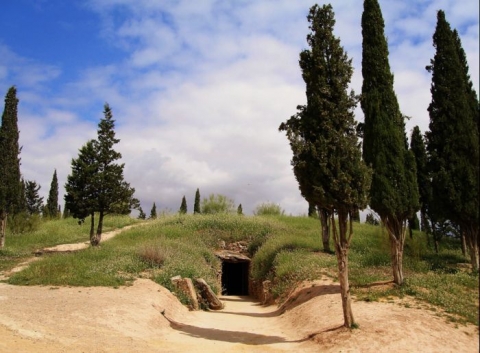
Photo: El Romeral dolmen, near Antequera in Andalucia.
El Romeral dolmen
Situated around 2km from Menga and Viera, the Tholos of El Romeral is one of the few examples of megalithic architecture orientated towards the western half of the sky. The axis of the chamber is aligned at 199 degrees, for the winter solstice, and points directly at the mountains of El Torcal. Built around 2000BC, the construction is more complex – with two bee-hive like chambers with false vaults and a lintelled 26-metre long passageway, covered by a 68m-diameter tumulus and topped by a circle of trees.
La Peña de los Enamorados
Visible from miles around on the vega of Antequera, this dramatic 880-metre high limestone peak has the profile of an Indian man´s face looking skyward (see photo below). It is also called “Lover´s Leap”, owing to a local legend which dates back to Medieval times – a tragic love story of a beautiful Moorish princess and handsome Christian prisoner.
The Legend of Lovers´ Rock
One of Andalucia´s most popular tales, the story dates back to the Reconquest of Andalucia in the early 15th century, when the Antequera region was on the final frontier of the Moorish kingdom of Granada and the Christian kingdom of Castille. Tazgona, the beautiful daughter of a Moorish leader and Tello, a Christian soldier who had been captured and imprisoned. One day, when Tazgona was visiting her father´s dungeon, she saw Tello behind bars and the two fell head over heels in love. Tazgona pleaded with her father to release Tello so that they could marry. But their union was strictly forbidden in those times, so with Tazgona´s help, Tello escaped from the prison.
They were spotted running away and Tazgona´s father sent his troops to capture them – vowing to execute Tello and imprison his rebellious daughter. Having reached the Lovers Rock, they climbed to the top, with the soldiers in hot pursuit. Realizing the futility of their position, and with one final kiss, the lovers flung themselves off the cliff holding hands, falling to their deaths. From that day on, the rock has been called the Peña de los Enamorados in their honour – with one side allegedly looking female and the other side male - the two faces of Tazgona and Tello together forever!
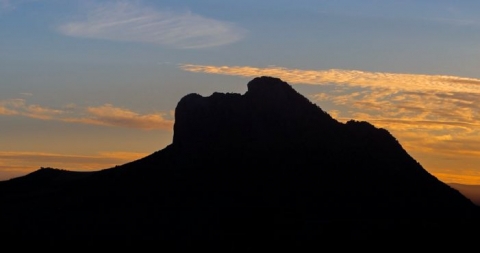
Photo: Lovers´Rock, near Antequera in Andalucia (Lui Marin).
This romantic tale has been passed down through the generations as an integral part of Antequera’s folklore. First written about in the late 15th century, the story has been immortalized by writers ever since, from Cervantes (who´s version had a happier ending!) to Washington Irving (Tales of the Alhambra). It was also adapted by 19th-century British poet Robert Southey (famous for The Story of the Three Bears, the original Goldilocks story) in his poem, The Lovers Rock.
New Green Way (Via Verde) proposed
Following a site inspection by UNESCO experts earlier this year, plans for a new Via Verde have been proposed, to link the Menga, Viera and El Romeral dolmens with the Peña de Enamorados; along with helping to preserve the natural corridor/view between the sites. This new Green Way will be similar in concept to other Vias Verdes in Spain, making use of the (soon-to-be) disused Seville/Granada railway line as a walking/cycling path to connect historic Antequera with its UNESCO-listed and surrounding landscape.
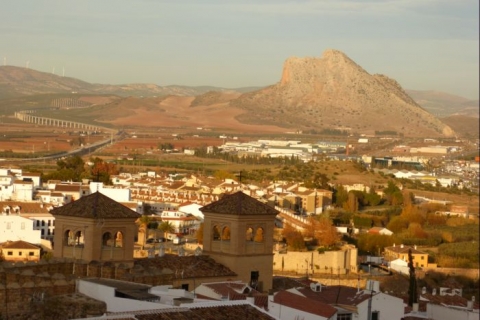
The old Seville/Granada railway track, which runs past the dolmens and straight towards the Peña, will replaced by the impressive new AVE fast-train line (Seville - Granada), which is nearing completion and runs a few KM to the north (see bridge in top left of photo above).
How to get there / Practical Information
El Torcal national park
Located approx. 30km north of Malaga, El Torcal is easily accessible from Antequera or the A-45 Malaga/Cordoba motorway (Junction 115, Villanueva de la Concepción). El Torcal is well signposted from most major streets in Antequera, including from the historic centre.
El Torcal visitor centre: +34 952243324 / +34 617444772.
Group bookings & guided tours: grupos@torcaldeantequera.com
Find El Torcal on Google Maps.
El Torcal Opening Times
01 Oct - 30 Mar: 10.00 to 17.00
01 Apr - 30 Sep: 10.00 to 19.00.
Free Admission. Note - if you visit on a clear, sunny weekend it can be very busy (especially in Spring or Autumn) and parking can be an issue!
Antequera dolmens
Arriving in Antequera on the A-7282 (from the A-92 Seville/Granada and A-343, or the A-45 Malaga/Cordoba), the Menga and Viera Dolmens are easy to find and well signposted. There is plenty of car parking and a reception centre with toilets. El Romeral Dolmen is located 2km away, on the north side of the railway line, which you must now cross by bridge on the new MA-232 slip road, through an industrial area.
Menga & Viera Dolmens reception centre: +34 952 71 22 06. Group bookings & guided tours: +34 952 71 22 08 / +34 670 945453.
Find the Antequera dolmens on Google Maps.
Antequera Dolmens Opening times
16 Dec - 31 Mar: Tue to Sat 09.00 to 17.30, Sun & Hols 09.00 to 15.30.
01 Apr – 15 Jun: Tue to Sat 09.00 to 19.30, Sun & Hols 09.00 to 15.30.
16 Jun - 15 Sep: Tue to Sun 09.00 to 15.30.
Closed Mondays (except public holidays) and 01 Jan & 06 Jan, 01 May, 24/25/31 Dec. Free Admission.
------------------------
Photo: Casa Olea B&B near Priego de Cordoba in Andalucia.
Casa Olea is an award-winning Boutique B&B/Inn located in the Sierras Subbeticas, close to Priego de Cordoba. Ideally situated in the heart of Andalucia, half way between Granada and Cordoba, for easy day trips to El Torcal and Antequera, as well as the Alhambra and Mezquita. Less than 2 hours´drive from Malaga, Granada and Seville airports. Double rooms from 110 euros per night including breakfast. www.casaolea.com

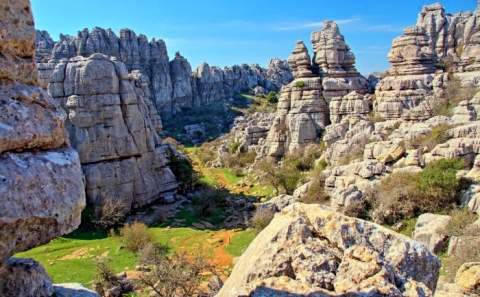
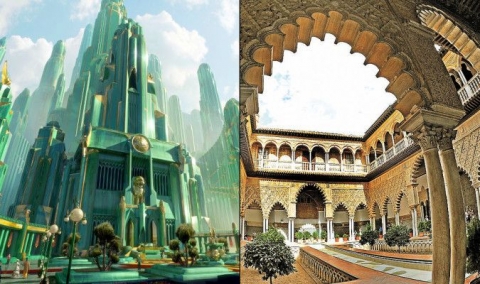
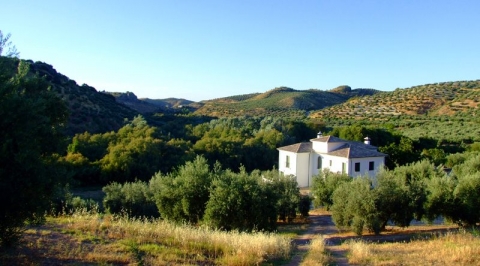
Add new comment